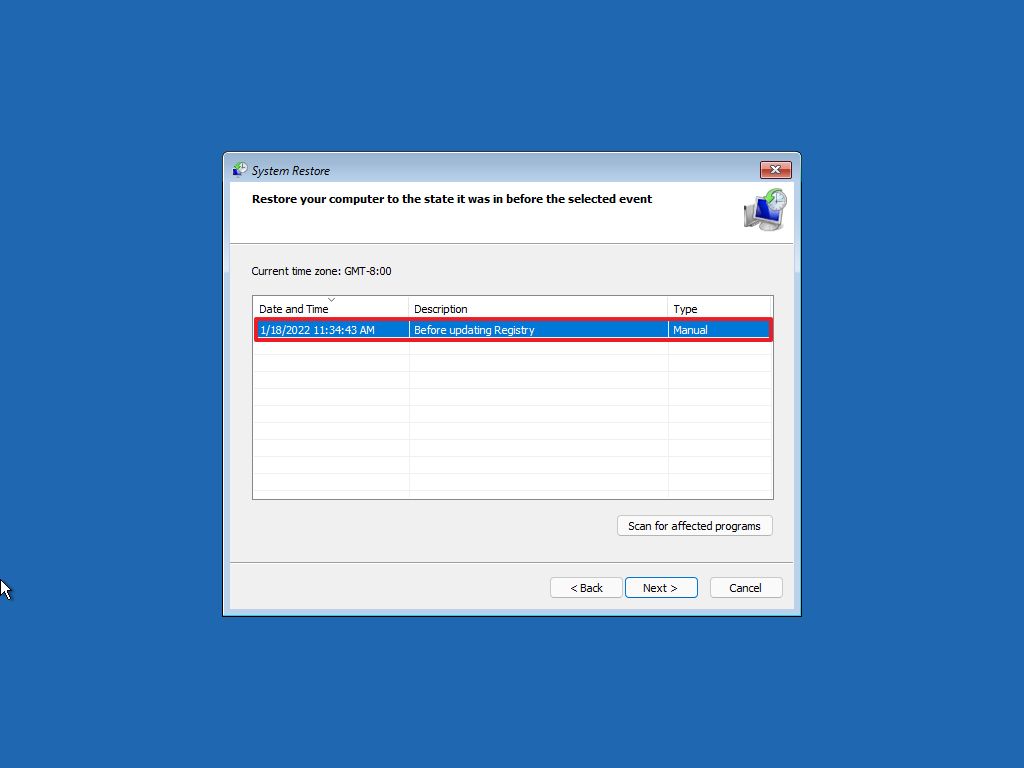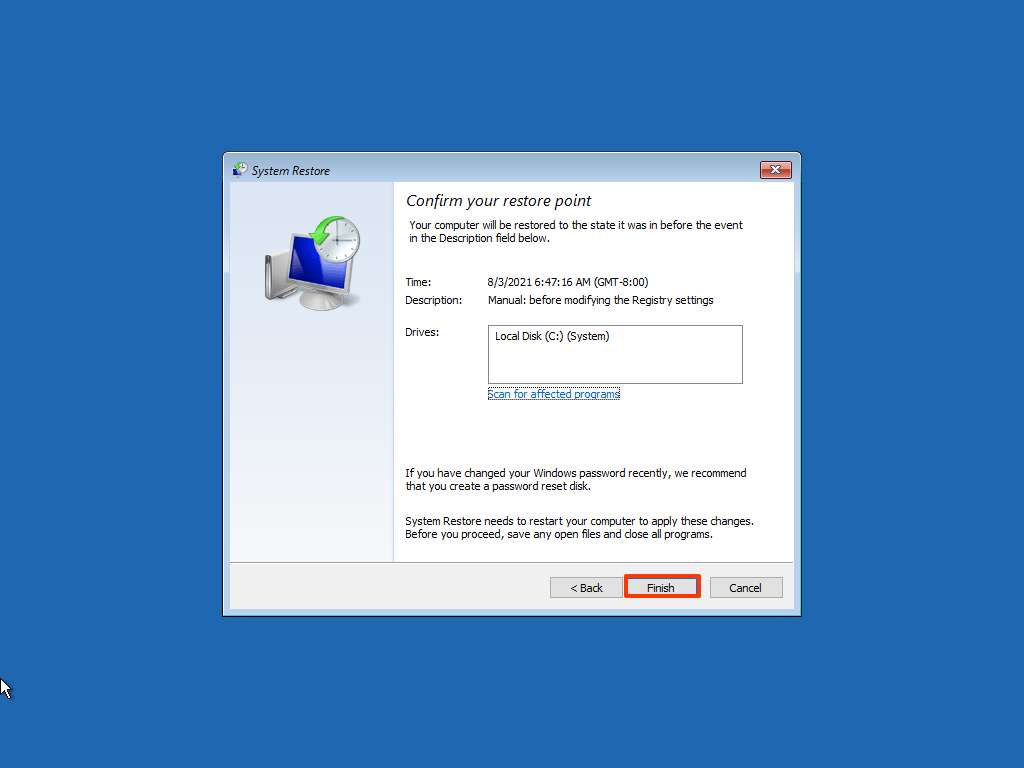
System Restore can help recover your computer after system changes, and here's how on Windows 11.
On Windows 11, System Restore is a feature that has been around for a long time, and its purpose is to create snapshots of the current working state of the computer and save them as "restore points" when specific events are triggered. For example, when installing an update, driver, app, or after applying changes to the Registry. If something unexpected occurs, you can use a restore point to revert the system state to resolve the issue without affecting your files.
The only caveat is that the recovery feature does not come enabled by default, which means that you must configure it manually before you can use it to undo system changes that may prevent the normal operation of your computer.
In this Windows 11 guide, we walk you through the steps to enable System Restore to fix problems after system changes.
- How to enable System Restore on Windows 11
- How to create a System Restore point on Windows 11
- How to undo changes using System Restore on Windows 11
How to enable System Restore on Windows 11
Unlike in older versions, System Restore does not come enabled by default, which means that before you can start using the feature, you have to enable it manually.
To enable System Restore on Windows 11, use these steps:
- Open Start.
- Search for Create a restore point and click the top result to open the System Properties page.
- Under the "Protection Settings" section, select the main "System" drive.
Click the Configure button.
![System Properties]()
Select the Turn on system protection option.
![Windows 11 enable System Restore]()
- Use the Max Usage slider and select how much space Windows 11 should reserve to store restore points.
- Click the Apply button.
- Click the OK button.
Once you complete the steps, Windows 11 will automatically create a restore point when applying system updates or when specific system changes are made.
If you have additional drives, enable the feature manually on each drive you want to protect. However, it's important to note that System Restore is meant to undo settings changes. It's not a backup solution.
How to create a System Restore point on Windows 11
Although Windows 11 can now create checkpoints automatically when it detects system changes, if you plan to reconfigure some settings, you always want to create a restore point manually.
To create a restore point on Windows 11, use these steps:
- Open Start.
- Search for Create a restore point, and click the top result to open the System Properties page.
Under the "Protection Settings" section, click the Create button.
![Create Restore Point]()
Type a descriptive name for the restore point — for example, Before updating Registry.
![System Restore point settings]()
- Click the Create button.
- Click the Close button.
- Click the OK button.
- Click the Close button.
After you complete the steps, you can use the restore point to undo system change if something happens after making system changes, such as installing a new driver, app, or modifying the Registry.
How to undo changes using System Restore on Windows 11
If something unexpected happens on Windows 11 as a result of an installation or settings changes, use a restore point to roll back the device to an earlier time to undo the changes and fix the problem. You can do this from the desktop or advanced startup settings.
Apply restore point from desktop
If you have access to the desktop, revert the changes using these steps:
- Open Start.
- Search for Create a restore point, and click the top result to open the System Properties page.
Click the System Restore button.
![Open System Restore for recovery]()
- Click the Next button.
Select the restore point to undo changes on Windows 11.
![Select restore point]()
- (Optional) Click the Scan for affected programs button to view the apps that will be removed through this process.
- Click the Next button.
- Click the Finish button.
Once you complete the steps, the restore point will apply, returning the device to the previous good working state. If one or more apps are affected, you will have to reinstall them manually.
Apply restore point from Advanced startup
You can use the Advanced startup settings to use the System Restore if the computer has problems starting up.
Access Advanced startup
To access the Advanced startup environment on Windows 11 to apply a restore point, use these steps:
- Start the device.
As soon as the Windows logo appears on the screen, press the power button to interrupt the boot sequence.
![Windows 11 Boot Logo]()
- Repeat steps 1 and 2 two more times. (Or until the device boots into the Windows Rrecovery Environment (WinRE).)
After you complete the steps, use the steps below to undo system changes using a previous restore point.
If you have trouble starting in the recovery environment, start the device with the Windows 11 installation media, and in the "Windows Setup" experience, click the Next button, click the Repair your computer button from the bottom-left corner, and then use the steps below.
Undo changes with restore point
To use System Restore from the Advanced startup environment, use these steps:
Click the Advanced options button.
![Open Advanced options]()
Click on Troubleshoot.
![Open Troubleshoot Settings]()
Click on Advanced options.
![Open Advanced options]()
Click on System Restore.
![Open System Restore]()
- Click the Next button.
Select the restore point to revert changes and fix problems with the computer.
![Select restore point on Windows 11]()
- (Optional) Click the Scan for affected programs button to view the apps that will be removed through this process.
- Click the Next button.
Click the Finish button.
![Windows 10 advanced startup complete system restore point]()
Once you complete the steps, System Restore will undo the system changes to fix any issues after installing a new driver, system update, or modifying the Registry.
On Windows 11, System Restore has been designed as a feature to recover a computer with configuration problems, not as a backup solution. If you want to be able to restore files, you still need to maintain a backup. If the restore point isn't working, you may need to reset the computer to factory default settings to fix the issue.
More Windows resources
For more helpful articles, coverage, and answers to common questions about Windows 10 and Windows 11, visit the following resources:












